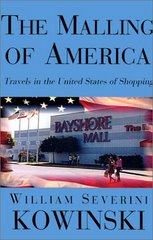by Bill Kowinski
"We've had two people die in earthquakes in historic times in Humboldt County. That's since 1850. I've run the hazard models, even with the Cascadia earthquake, the most I can kill is maybe 40. I don't mean to be facetious about that but it turns out it's really hard to kill people in earthquakes in Humboldt county. It's much more dangerous to go driving down the road here. "
It was early fall in 1996, and I was about to get my hair cut at the place I'd been going to for at least five years, just off Forbes Avenue near the University of Pittsburgh in the Oakland section of Pittsburgh, PA. It was an emotional time, since I was giving up my Pittsburgh life and an apartment I loved, moving away from my local friends and favorite places, to a new life on the North Coast of California. So there were crosscurrents of contrary emotions, sad and exciting at the same time.
Sunshine was pouring into the room as I picked up a magazine to read while I waited. It was
Rolling Stone, and inside was an article concerning the area of California that was more endangered by earthquakes than the more famous vicinity of the fabled San Andreas fault. It turned out to be the North Coast. Exactly where I was going. It was the first inkling I had that I was committing everything to a place expecting a powerful earthquake, and one of the most seismically active landscapes in the world.
One of the people prominently quoted in
Rolling Stone was named Lori Dengler, in her fourth year or so of teaching at Humboldt State University. Although I haven't seen the article in years, what I most recall is a scene that had Dengler standing near route 101 in Eureka and talking about how after the earthquake the highway and the mall would be swept with a tsunami.
After the recent Community Forum at HSU, prompted by the devastating December 26, 2004 earthquake and tsunamis in the Indian Ocean, I told this story to one of the presenters, geophysicist Lori Dengler. In my eight mostly earthquake-free years here, I had seen her name often in connection with earthquake preparedness, so I knew she talked to a lot of North Coast citizens about earthquakes. I asked her if she ran into a reaction I had, at least for a moment, after reading the
Rolling Stone article: if I'd known about this, I might have decided not to come here.
"Not very often," Lori said. " I have talked to a handful of people who just cannot deal with earthquakes. When that shaking starts, there's just something that just terrifies them. Sort of a primeval response. . I know people who have moved away---who have moved to Florida, they can deal with hurricanes, or moved to Minnesota, they can deal with winter storms. We haven't had earthquakes in quite awhile. That is going to change and there will be people who cannot deal with earthquakes. There's something in their basic psyche that tends to flip them out. But I'd say it's relatively rare."
For them, she added, understanding the science doesn't help. "I'd say, look, it's much more dangerous to go driving down the road here. We've had two people die in earthquakes in historic times in Humboldt County. That's since 1850. I've run the hazard models, even with the Cascadia earthquake, the most I can kill is maybe 40. I don't mean to be facetious about that but it turns out it's really hard to kill people in earthquakes in Humboldt county."
"We just don't have the kind of construction, and the kind of dense population, that leaves itself to catastrophic loss of life in an earthquake. Whereas the number of smoking related deaths in the county is probably thousands every year. I know there are more murders every year, and I know that driving on the highways is much more hazardous. And most people when you point that out say oh, okay, I can deal with that."
But there are a lot of people who choose to live here despite the earthquakes. I asked Lori what stands out in how people here deal with the situation?
"I would say that this is a more self-reliant population. I think that people in general don't look to the government to solve all their problems. The issue of preparedness is really a personal responsibility, and we see much higher levels of preparedness here than elsewhere in the state, and it's been very consistent for a long period of time. It's partly because every winter people lose their power, so they know how to cope. We also have a fair number of people who have lived here a long time, and they remember getting through earthquakes in the past."


